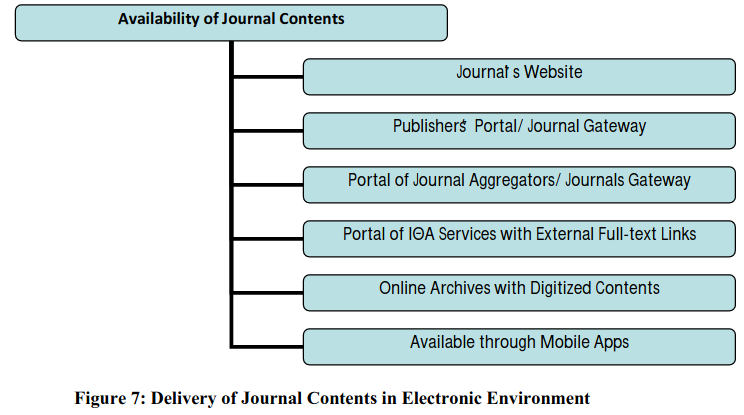3.2 Emergence of e-Journals
Till the last quarters of the twentieth century, the scholarly journals were mostly distributed globally in print format through postal networks. Due to snail mail, many important research findings got delayed reaching to researchers located in distant countries. In print format, journal has limited readership as only one person can read a particular issue at a point of time. Other readers have to wait until their turn comes to have a glance at the latest issue of the journal. In the last quarter of the twentieth century, the publishers got interested in integrating information and communication technologies (ICT) in scholarly journal publishing for rapid global dissemination, expanding their markets to emerging nations and other developing nations. The for-profit as well as non-profit journal publishers then made extra efforts to reach the unreached through electronic journals or e-journals available through publishers’ websites. An e-journal not only provides same contents as of a print journal, but can also provide material not possible in print journals. E-journals can be distributed through journals’ website, publishers’ portal, e-journal gateway, and full-text databases of journal aggregators. Nowadays, many online bibliographic databases and online indexing & abstracting (I&A) services provide external full-text links to journal contents available on publishers’ portal. Figure 7 indicates different channels of delivery of journal contents on electronic environment. Publishers provide unique document identifier to each published article, which is known as DOI or Digital Object Identifier33. Every DOI is registered with Digital Object Identifier System at www.doi.org and www.crossref.org. Bibliographic databases and I&A services interlink every article recorded in their databases with the unique DOI, so that users can easily identify and obtain full-text of relevant articles. Table of contents (TOC) alert service is one of the major useful services for researchers to know and identify relevant articles in their areas of interests. E-journals can disseminate TOC alerts through various modes such as emails, mailing lists, RSS feeds, and social media to outreach their global audience. Some search engines, viz. Google Scholar, facilitate users to set an article alert on a specific search term or an author or an institution or a journal, so they get informed almost immediately when new contents become available on online platforms. The beginning of the twenty first century is also marked by emergence of smart phones and mobile digital technologies such iPad, Tab, or similar devices. The researchers and academics are also increasingly using these mobile devices for information access and research collaborations. Many e-journals have started disseminating full-text journal contents through special Apps suitable for mobile devices. M-Science is growing now at much higher pace to supplement efforts in e-science mode of science and research communications. Open access journals are necessarily electronic journals without any restriction of information access and content sharing and replication with due acknowledgement through researchers’ personal or professional networks. Open access journals are also upgrading their platforms to make their full-text contents seamlessly accessible through M-Science platforms and mobile devices.

